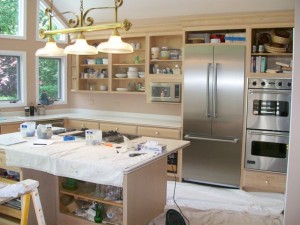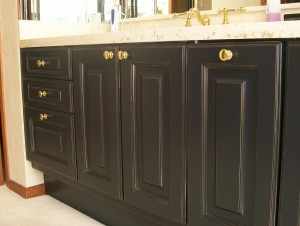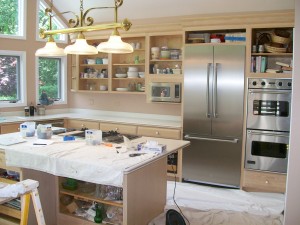On a recent project on Lake Shore Drive in Chicago, our painting and decorating company was tasked, among other things, to hand-paint the wood cabinets in a large kitchen. In fact, the kitchen had eighty doors and drawer fronts, which included three nine-foot doors for closet areas.
The cabinets were solid cherry and had been subtly distressed with tools by the manufacturer. Additionally, there was a busy tile floor throughout, which was replaced with a wide-plank oak floor. As you can tell from the before and after pictures, our client had a dramatically different look in mind for his kitchen. What he had pictured were hand-painted cabinets, a hand-painted wood floor, dark walls and dark orange lacquered doors for the pantry and laundry room.
Creating a professional hand-painted finish like this involved a total of ten steps and over two hundred fifty hours of labor, executed over a four-week time period. All our cabinet refinishing work was done on the client’s premises, in the empty, large living room adjacent to the kitchen. Because the project was in a condominium building, no spray equipment could be used and all products used were waterborne.
The project included to puttying/sanding of all the hardware holes on the doors and drawers. It also involved the removal of the moldings holding the glass in place on twelve doors and finishing all those moldings and screw heads like the rest of the cabinets. Of course, the project would not have been complete without installing about two hundred new round bumpers on all the doors and drawers!
Hand-painting the floor boards also presented particular challenges. We first had to fill all the gaps between the boards with wood putty. In order to avoid filling the wood grain by puttying the gaps, we had to first tape off the board edges before puttying the gaps. After the putty was dry, we removed the tape and sanded the putty. We coated the boards with three coats of a semi-gloss industrial marine floor coating to achieve the desired durability and sheen.
Our work as a painting and decorating contractor first requires that we deeply listen to our clients in order to grasp their vision. Second, it also requires that we do whatever is necessary to achieve the end-result the client is looking for, by applying our skill, knowledge and experience. Producing that outcome is what we are about as a team.







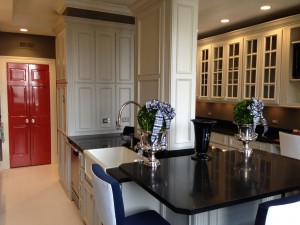
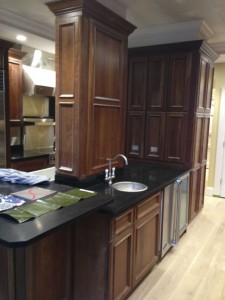
 Follow
Follow


